🌿 What is Vadhanarayanan Powder ?
Vadhanarayanan Powder is derived from the leaves of the Vadhanarayanan plant (Cleistanthus collinus), a medicinal shrub traditionally used in Siddha and folk medicine. Though known for its potent properties, it is administered with caution and under professional guidance due to its powerful effects. It has been historically used in treating respiratory issues, skin diseases, and certain neurological imbalances.
🌱 Description of the Vadhanarayanan Plant
Botanical Name: Cleistanthus collinus
Family: Phyllanthaceae
Plant Type: Shrub or small tree
Height: Typically grows between 3 to 6 meters (10 to 20 feet)
Leaves: Simple, alternate, ovate to lanceolate with smooth margins
Flowers: Small, greenish or purplish, unisexual
Fruits: Capsule-like, containing several seeds
Odor: Characteristic strong odor, especially when dried
🌍 Habitat of Vadhanarayanan
Native to India and Sri Lanka, the Vadhanarayanan plant is typically found in dry deciduous forests, scrublands, and hillsides. It thrives in arid to semi-arid regions and is often found in Tamil Nadu, Andhra Pradesh, and parts of Karnataka. It is known for its drought resistance and hardy nature.
🌟 Medicinal Properties of Vadhanarayanan Powder
Traditionally, Vadhanarayanan has been used for its specific therapeutic attributes, primarily in externally focused treatments:
• Antimicrobial Action: Helps combat bacterial and fungal skin infections.
• Respiratory Support: Used in decoctions for managing asthma and chronic cough (with extreme care).
• Detoxification: Believed to help eliminate toxins when processed correctly.
• Neurological Balance: Traditionally used in specific formulations to calm nerve disorders.
• Anti-inflammatory: Reduces swelling and irritation when applied externally.
🧪 Active Compounds in Vadhanarayanan
Vadhanarayanan leaves contain a mix of bioactive compounds, but due to its toxicity in raw form, it is essential to use only processed and practitioner-approved preparations:
• Cleistanthin A & B: Known for strong biological activity—should be consumed only under supervision.
• Diphyllin: A type of lignan with antimicrobial properties.
• Glycosides & Tannins: Provide astringent and anti-inflammatory effects when used externally.
🍵 Usage and Dosage
⚠️ Internal use of Vadhanarayanan Powder should only be done under Siddha or Ayurvedic practitioner guidance due to its potency. The following suggestions are traditionally noted but require supervision:
For Skin Disorders (External Use):
• Mix 1/2 tsp Vadhanarayanan Powder with turmeric or neem powder.
• Add rose water to form a smooth paste.
• Apply on affected area, leave for 15 minutes, then rinse off.
• Frequency: Use twice a week for skin rashes or fungal infections.
For Steam Inhalation (Respiratory Support):
• Boil 1/4 tsp powder in water with eucalyptus leaves.
• Inhale the steam with care for 5 minutes.
• Not to be used in children or elderly without medical advice.
⚠️ Precautions
• Toxicity: Raw leaves and unprocessed powder can be toxic if consumed improperly.
• Allergic Reactions: Patch test before external application.
• Supervision Required: Always consult a qualified Siddha or Ayurvedic practitioner.
• Avoid During Pregnancy: Not recommended for pregnant or lactating women.
📦 Storage
• Store Vadhanarayanan Powder in a tightly sealed glass or metal container.
• Keep in a dry place away from sunlight and humidity.
• Use a dry spoon to avoid contamination.
• Shelf life: Up to 12 months when stored properly.
🌿 Organic and Ethical Considerations
• Purity: Use only from trusted sources that process the powder with detoxification methods.
• Sustainable Harvesting: Ensure the plant is harvested without damaging its natural habitat.
• Ethical Use: Avoid casual or home-based internal use without proper training or guidance.
English: White Gulmohar, Delonix Elata.
Hindi: Waykaran, Samrsro, Sanesro, Sandeshra.
Malayalam: വാദനാരായണൻ (Vadhanarayanan).
Telugu: చిన్న సెరిబిసిరి, చిట్టి కేశ్వరము (Chinna Seribiseri, Chitti Keshwaramu).
🥄 Nutritional Facts, Info & Dosage for Vadhanarayanan Powder (Cleistanthus collinus)
While Vadhanarayanan Powder is not commonly used as a nutritional supplement due to its potent phytochemical profile and potential toxicity in unprocessed form, it does contain several plant-derived compounds that provide therapeutic benefits when properly purified and administered in traditional systems like Siddha and Ayurveda.
Nutritional Composition (per 100g of detoxified powder – approximate values based on processed form used traditionally):
-
Dietary Fiber: 15–20g
-
Plant Alkaloids: Trace amounts (processed)
-
Polyphenols (including lignans like Diphyllin): 1–2%
-
Tannins: 2–4%
-
Moisture Content: 8–10%
-
Protein: 2–4g
-
Ash content (mineral residue): 5–7%
Note: These figures are estimated based on traditionally prepared powder. Crude/unprocessed forms are toxic and not recommended for consumption.
🧬 Therapeutic Profile:
-
Antifungal & Antibacterial: Effective in traditional topical treatments.
-
Respiratory Relief: Fumes from decoction traditionally used for chest congestion.
-
Antioxidant Activity: Due to polyphenols and flavonoids.
-
Detoxifying Properties: Known for promoting skin and blood purification (under strict preparation).
-
Nerve-Calming Effect: Used in Siddha for mental restlessness in carefully prepared formulations.
🌿 Recommended Dosage (Only Under Medical Guidance):
For External Use (Skin Conditions):
-
Dosage: ½ to 1 tsp mixed with rose water, aloe vera gel, or turmeric paste
-
Frequency: Once daily or every alternate day depending on skin condition
-
Method: Apply as a mask or pack to affected area, rinse after 15 minutes
For Inhalation Therapy (Respiratory Support):
-
Dosage: ¼ tsp in steam decoction with herbs like eucalyptus or tulsi
-
Frequency: Once daily for 3–5 days during congestion
-
Method: Inhale steam for 5–10 minutes, avoiding direct exposure to hot steam
Important Note:
❗ Internal consumption is not advised without practitioner supervision. The plant contains powerful glycosides and alkaloids that may be toxic in crude form. Only use detoxified herbal preparations under certified Siddha or Ayurvedic guidance.
🍽️ How to Consume, Use & Store
✅ For External Therapeutic Use (Topical Applications Only — Internal use only under qualified Siddha supervision)
-
For Skin Conditions (Itching, Eczema, Rashes):
• Mix ½ teaspoon of Vadhanarayanan Powder with neem leaf paste or rose water.
• Apply the paste evenly to the affected skin area.
• Leave it on for 15–20 minutes. Rinse off with lukewarm water.
• Use once daily or every alternate day as advised by a practitioner.
-
For Wound Cleansing & Antiseptic Use:
• Boil 1 tsp powder in 200 ml of water for 10 minutes.
• Cool and strain. Use the decoction as a wash for minor wounds, cuts, or infections.
• Can be used twice daily to aid healing and prevent infection.
-
For Respiratory Relief (Fume Inhalation):
• Slightly heat ¼ tsp powder along with dried tulsi and eucalyptus leaves.
• Inhale the herbal fumes gently, avoiding direct smoke exposure.
• Traditionally used to clear nasal and chest congestion.
• Use only under supervision for 3–5 days.
✅ Internal Use — Strictly Under Supervision Only
• Not recommended for unsupervised internal intake.
• Detoxified formulations may be used by Siddha doctors for neurological or liver-related disorders in micro-doses.
🧴 How to Store
✅ Best Practices for Storage:
• Store Vadhanarayanan Powder in an airtight, non-reactive container (preferably stainless steel or glass).
• Keep in a cool, dry, and well-ventilated place.
• Avoid direct exposure to sunlight or moisture.
• Always use a clean, dry spoon to scoop the powder.
• Store away from strong-smelling substances as the powder can absorb odors.
🗓️ Shelf Life:
When stored correctly, detoxified Vadhanarayanan Powder remains effective for up to 12 months.
🚫 Avoid:
• Storing in plastic containers for long-term use.
• Exposure to water, humidity, or mold-prone areas.
• Using if the powder shows signs of discoloration or an unusual odor.


 SCIENTIFICALLY TESTED & COMPLETELY SAFE. SUITABLE FOR VEGETARIANS. NOT TESTED ON ANIMALS/NO ANIMAL INGREDIENTS. NO KNOWN SIDE EFFECTS. COMPLETELY SAFE. NON-TOXIC. FREE FROM HEAVY METALS
SCIENTIFICALLY TESTED & COMPLETELY SAFE. SUITABLE FOR VEGETARIANS. NOT TESTED ON ANIMALS/NO ANIMAL INGREDIENTS. NO KNOWN SIDE EFFECTS. COMPLETELY SAFE. NON-TOXIC. FREE FROM HEAVY METALS 

 The Food and Drug Administration has not evaluated these Statements. This product is classified as an “Herbal Food Supplement” and is not designed to diagnose, treat, cure, or prevent any disease. If you have any underlying health conditions, please consult a healthcare professional before using this product
The Food and Drug Administration has not evaluated these Statements. This product is classified as an “Herbal Food Supplement” and is not designed to diagnose, treat, cure, or prevent any disease. If you have any underlying health conditions, please consult a healthcare professional before using this product 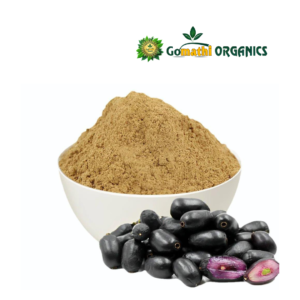
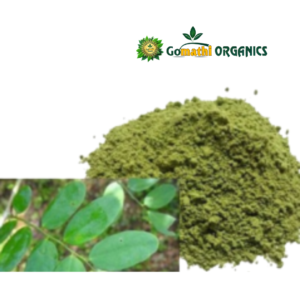
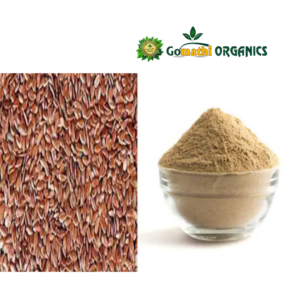
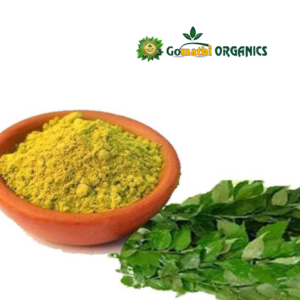
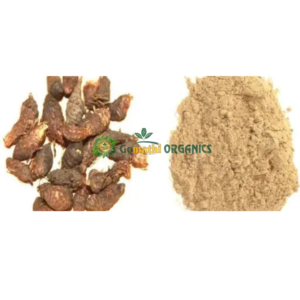
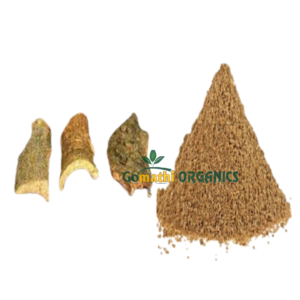

Reviews
There are no reviews yet.